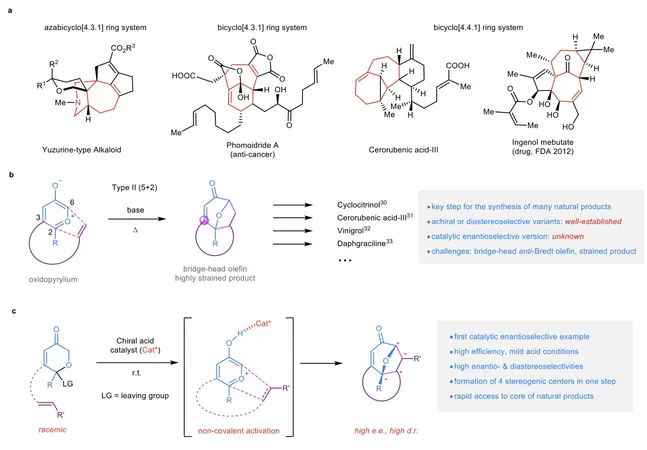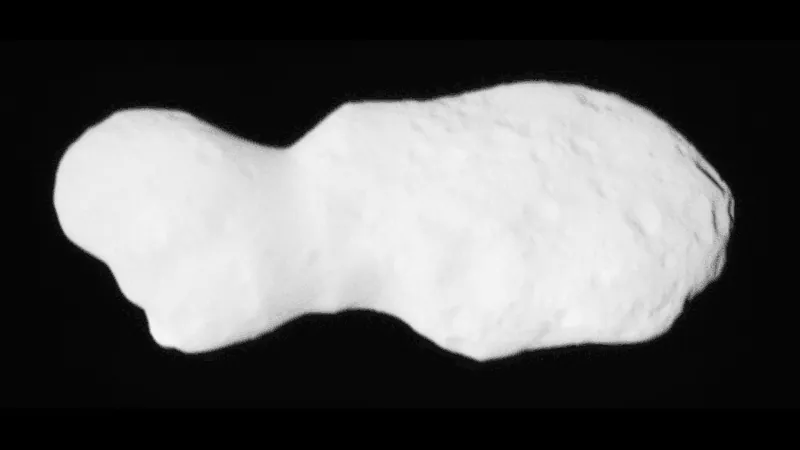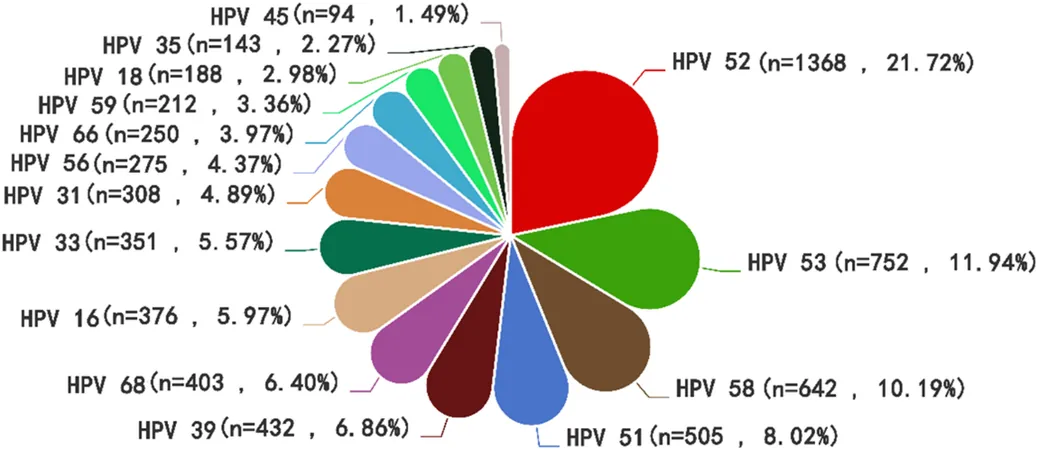
Groundbreaking Discovery: New Method to Create Complex Drug Compounds!
2025-06-04
Author: Jia
A Revolutionary Breakthrough in Chemistry!
In an exciting advancement, a team of researchers from the Hong Kong University of Science and Technology (HKUST) has unveiled a groundbreaking method to synthesize complex chiral bridged polycyclic compounds. This cutting-edge technique, known as a catalytic enantioselective type II [5 + 2] cycloaddition, is set to revolutionize the landscape of drug discovery.
What Are Chiral Bridged Polycyclic Structures?
Chiral bridged polycyclic compounds are fascinating molecular structures that play a significant role in many natural products and pharmaceuticals. However, creating these intricate shapes—especially those featuring bridged seven-membered rings—has long been a daunting challenge for chemists.
Unlocking Molecular Complexity!
The innovative method harnesses the power of 3-oxidopyrylium ylides to achieve the desired molecular complexity, paving the way for faster and more effective synthesis of other valuable compounds. This research marks a major milestone as it is the first to report a catalytic enantioselective type II cycloaddition—a leap forward in crafting diverse natural products.
Overcoming Major Hurdles!
The research team, led by Professors Sun Jianwei and Lin Zhenyang, tackled the formidable challenge of avoiding the formation of strained, anti-Bredt cycloadducts while still maintaining precise enantiocontrol. Their innovative approach involves non-covalent activation using chiral acid catalysis, a refreshing alternative to conventional methods.
The Power of Chiral Phosphoric Acids!
Remarkably, the researchers developed chiral phosphoric acids (CPAs) from the SPHENOL backbone in their labs. These acids proved incredibly effective in inducing enantioselectivity, accelerating the crucial enolization step while also offering the necessary asymmetric induction to formulate enantioselective C–C bonds. This dual functionality significantly boosts the cycloaddition's overall efficiency!
Implications for Future Drug Discovery!
This pioneering protocol results in a variety of functionalized and bridged carbocycles, serving as advanced intermediates for synthesizing complex molecules. Many of these structures are fundamental to important natural products and drug molecules, hinting at a brighter future for pharmaceutical development.
Conclusion: A Catalyst for Change!
As publications in prestigious journals like Nature Synthesis spotlight this remarkable research, one thing is clear: the future of drug discovery is looking brighter than ever, thanks to the innovative methods developed at HKUST.






 Brasil (PT)
Brasil (PT)
 Canada (EN)
Canada (EN)
 Chile (ES)
Chile (ES)
 Česko (CS)
Česko (CS)
 대한민국 (KO)
대한민국 (KO)
 España (ES)
España (ES)
 France (FR)
France (FR)
 Hong Kong (EN)
Hong Kong (EN)
 Italia (IT)
Italia (IT)
 日本 (JA)
日本 (JA)
 Magyarország (HU)
Magyarország (HU)
 Norge (NO)
Norge (NO)
 Polska (PL)
Polska (PL)
 Schweiz (DE)
Schweiz (DE)
 Singapore (EN)
Singapore (EN)
 Sverige (SV)
Sverige (SV)
 Suomi (FI)
Suomi (FI)
 Türkiye (TR)
Türkiye (TR)
 الإمارات العربية المتحدة (AR)
الإمارات العربية المتحدة (AR)